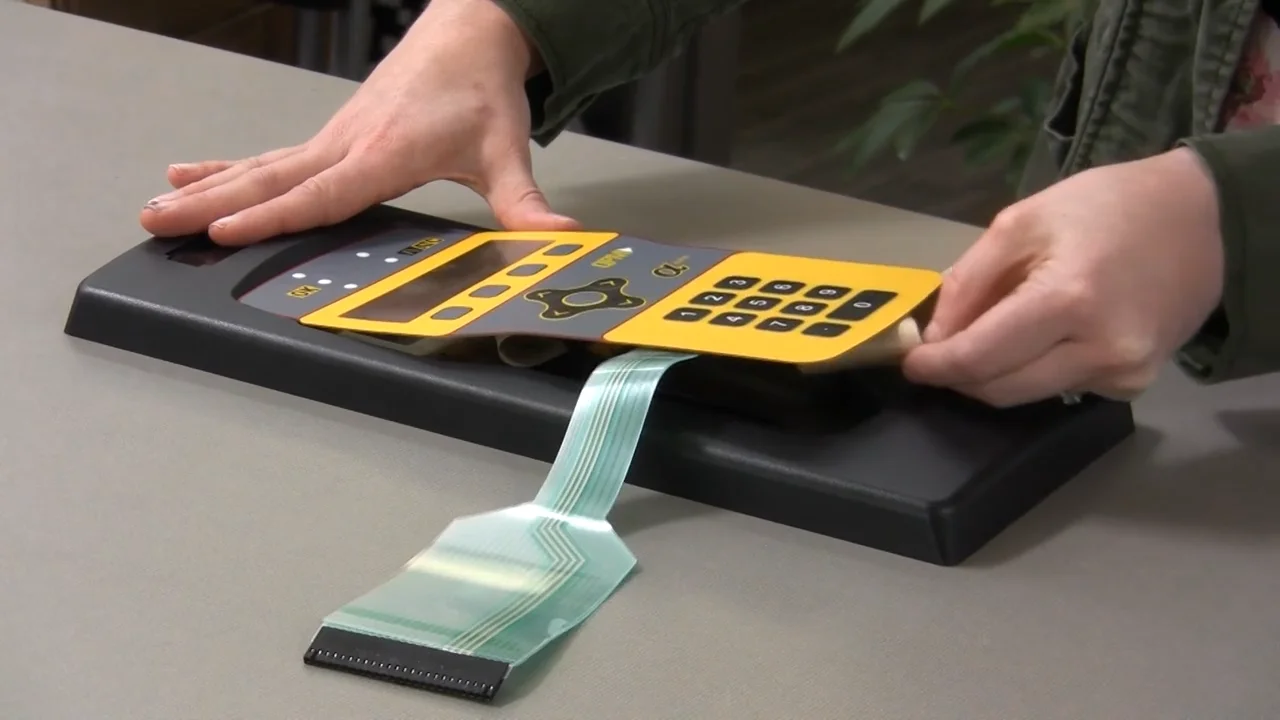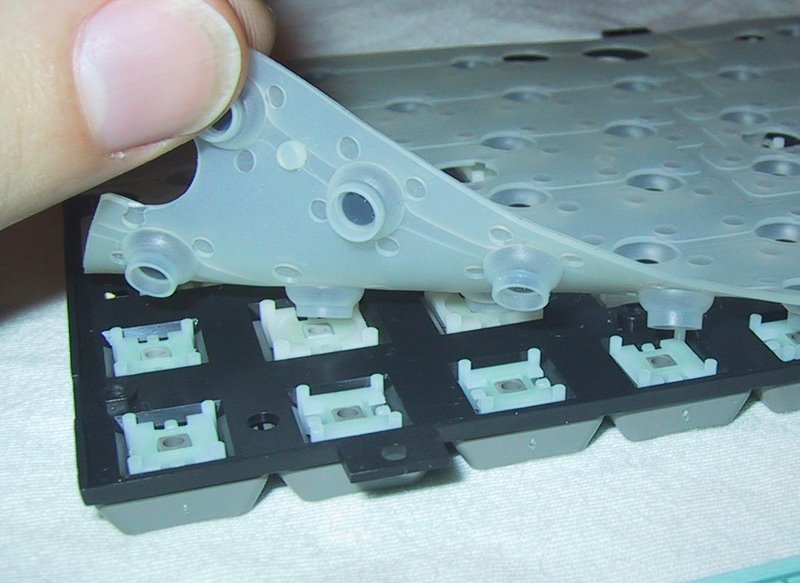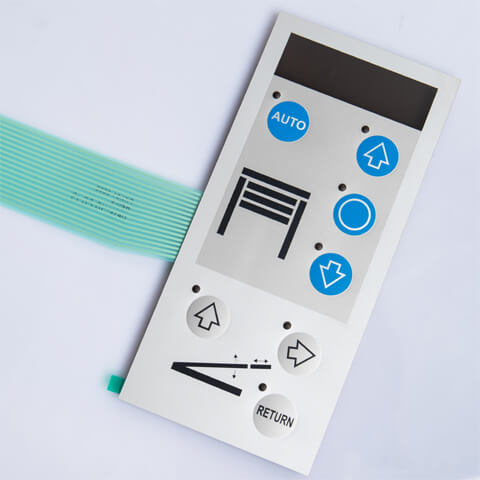The Duty of a Membrane Switch in Modern Touch Interfaces and Controls
The Duty of a Membrane Switch in Modern Touch Interfaces and Controls
Blog Article
Understanding the Functionality of Membrane Layer Changes for Interface Instruments
The capability of membrane switches over stands for a considerable advancement in interface style, combining performance with visual flexibility. These switches run through a multi-layered framework that equates individual interactions right into electrical signals, permitting both small layouts and strength against environmental variables. As sectors progressively prioritize customer experience, comprehending the nuances of membrane layer button innovation becomes essential. What effects do these improvements hold for future applications, and exactly how might they redefine user communications across numerous devices?
What Are Membrane Buttons?
Membrane layer switches are innovative interface gadgets that assist in customer communication with digital tools. These functional components include multiple layers, including a graphic overlay, spacer, and a printed circuit layer. The design permits a seamless combination right into numerous digital tools, boosting both the visual and useful facets of customer interfaces.
Membrane layer buttons are generally employed in a wide range of applications, from home home appliances to industrial machinery and clinical tools. Their building and construction commonly includes a slim account, making them a suitable choice for small styles. The tactile feedback offered by these switches can be crafted to meet certain user choices, making certain reliable communication between the user and the device.
Resilience is another substantial advantage of membrane layer switches, as they are resistant to dust, dampness, and chemicals, which improves their lifespan popular environments. Furthermore, these switches can be tailored in terms of form, dimension, and graphic design, enabling for branding and user-specific features. On the whole, membrane switches represent a practical service for boosting customer experience in electronic gadgets, incorporating functionality with aesthetic charm in an efficient manner.
How Membrane Layer Changes Work
Operating on a straightforward concept, membrane changes use a split construction to sign up user input successfully. Each switch includes several layers, including a printed circuit layer, a spacer layer, and a leading graphic layer, which are made to interact perfectly. When a customer presses the top layer, it compresses the spacer layer, bringing the conductive components of the circuit layer into call with each various other.
This contact produces a closed circuit, signaling the gadget to execute a particular feature. The design enables for different setups, consisting of responsive feedback, which can enhance the individual experience by giving a physical sensation upon activation. The products made use of in membrane layer buttons often include flexible substratums, such as polyester or polycarbonate, which ensure toughness and resilience against wear and tear.

Trick Benefits of Membrane Layer Switches

One more significant benefit is their compactness. Membrane layer switches are slim and lightweight, which allows producers to conserve area in their devices without giving up performance. This attribute is specifically beneficial in applications where weight and quantity are vital considerations.
Furthermore, membrane buttons are immune to dirt, wetness, and chemicals, enhancing their durability. This durability extends their life expectancy and decreases the need for frequent replacements, causing cost financial savings over time.
Additionally, the tactile comments given by membrane layer buttons can be optimized to improve individual communication. They can include features such as raised buttons or audible clicks, enhancing use and customer experience.
Applications Across Industries
Individual user interface gadgets using membrane layer switches prevail in a wide selection of industries, showcasing their adaptability and performance. Membrane Switch. In the medical market, membrane buttons are indispensable to devices such as diagnostic devices and individual monitoring systems, where their sturdiness and convenience of cleaning are critical for keeping hygiene criteria. Similarly, in the automotive market, these switches are employed in dashboard controls and infomercial systems, offering a sleek and modern interface for users.
Additionally, the customer electronics market benefits from membrane layer buttons in devices and handheld gadgets, where portable layout and straightforward interfaces boost individual experience. Industrial applications additionally utilize membrane switches over for control board in equipment and automation systems, emphasizing their robustness and resistance to harsh atmospheres.
In the aerospace and defense sectors, membrane layer buttons are used in cabin controls and equipment, where reliability and performance under severe conditions are paramount. Furthermore, the video gaming industry progressively integrates membrane buttons in controllers and gallery makers, adding to an interesting customer experience. Overall, the adaptability of membrane changes allows their prevalent use throughout countless industries, emphasizing their relevance in modern customer interface style.
Future Trends in Membrane Layer Switch Innovation

Furthermore, using innovative products, such as polycarbonate and polyester films, is expected to increase, supplying boosted sturdiness and resistance to ecological stress factors. These products contribute to the overall durability of membrane layer buttons, making them ideal for harsher commercial applications.
Moreover, the consolidation of wise innovation, including IoT connectivity, will certainly make it possible for membrane layer buttons to connect with various other tools and systems, assisting in an extra interactive individual experience. This fad straightens with the expanding need for clever tools throughout different markets, from health care to consumer electronics.
Last but not least, customization alternatives are prepared for to increase, allowing makers to develop bespoke solutions customized to particular customer demands and choices. These advancements will position membrane buttons as essential components in the evolution of customer interface modern technology.
Verdict
To conclude, membrane layer changes represent a crucial innovation in individual interface innovation, offering a dependable and functional option for diverse electronic applications. Their split building facilitates portable style, while features such as responsive comments boost user communication. The toughness against ecological aspects further strengthens their utility throughout multiple sectors. As developments in material scientific research and touch sensing innovations continue, the capability and applicability of membrane buttons are expected to broaden, reinforcing their value in modern digital devices.
Report this page